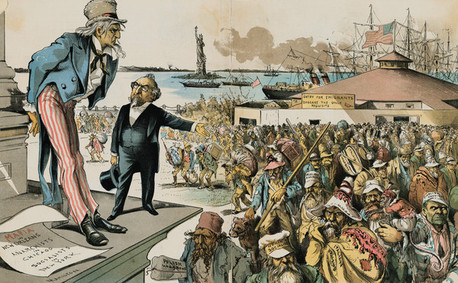The Emergence of Modern America; 1877-1914
Between 1880 and 1920, about 24 million immigrants arrived in the United States. These were known as the “New Immigrants” and came mostly from China, Japan, and Southern and Eastern Europe. Reasons people were fleeing their homelands were low wages, unemployment, disease, forced military conscription, and religious persecution. They came over to America and settled in cities in the Northeast or Chicago. They then created small ethnic communities and maintained their culture by opening specialty grocery stores, restaurants, churches, synagogues, and schools. The Chinese Exclusion Act was passed in 1882 preventing the immigration of Chinese labors in the United States for 10 years.

Ellis Island
Open from 1892 to 1954, over 12 million immigrants entered the United States through Ellis Island. The Island was originally 3.3 acres but expanded to 27.5 acres from landfill. When immigrants arrived they would all go through an inspection process. Doctors would scan every immigrant for physical ailments in the “six second physicals.” 2% of the total immigrants that arrived were excluded from entry because they were diagnosed with a contagious disease or an inspector thought the immigrant was going to become a public charge or an illegal contract laborer.
